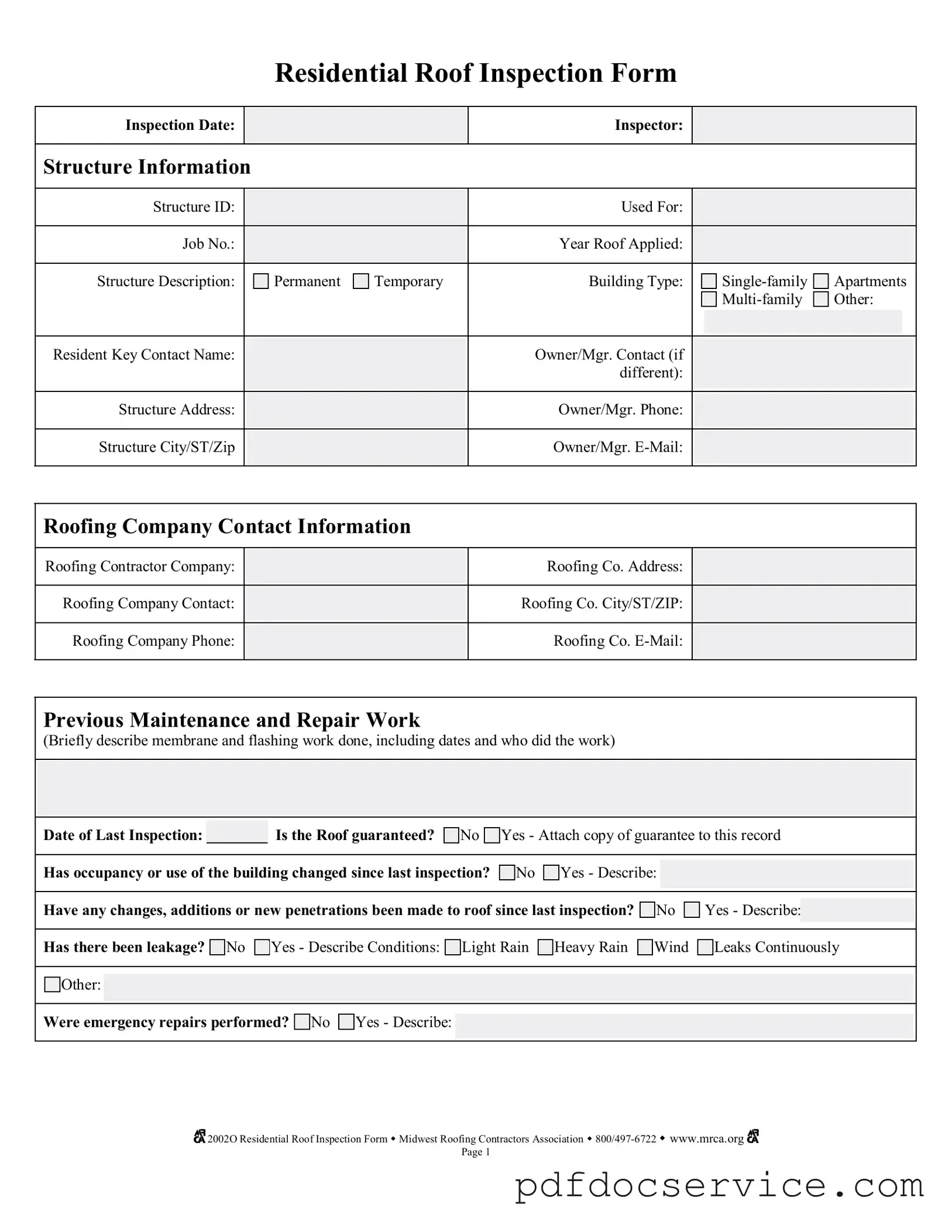The Roof Inspection form serves as a comprehensive tool for assessing the condition of residential roofing structures. It includes essential details such as the inspection date, inspector's name, and specific information about the structure, including its identification, purpose, and type. The form captures contact information for both the owner or manager and the roofing contractor, ensuring clear communication regarding any necessary repairs or maintenance. Previous maintenance and repair work is documented, along with the date of the last inspection, which helps in tracking the roof's history. The form also inquires about any changes in occupancy or use of the building, as well as any modifications made to the roof since the last inspection. Notably, it addresses leakage issues and emergency repairs, providing a clear picture of the roof's current state. Various conditions are evaluated using a straightforward coding system, indicating whether the roof is in good, fair, or poor condition. Specific areas of concern are highlighted, including the interior roof deck, walls, exterior walls, drains, and penetrations. Additionally, the form allows for the documentation of miscellaneous issues and includes a section for photographic records, ensuring that all findings are thoroughly recorded and can be referenced in the future. This structured approach aids in maintaining the integrity of the roofing system and supports proactive management of roofing needs.
